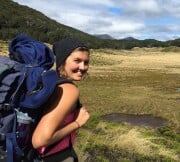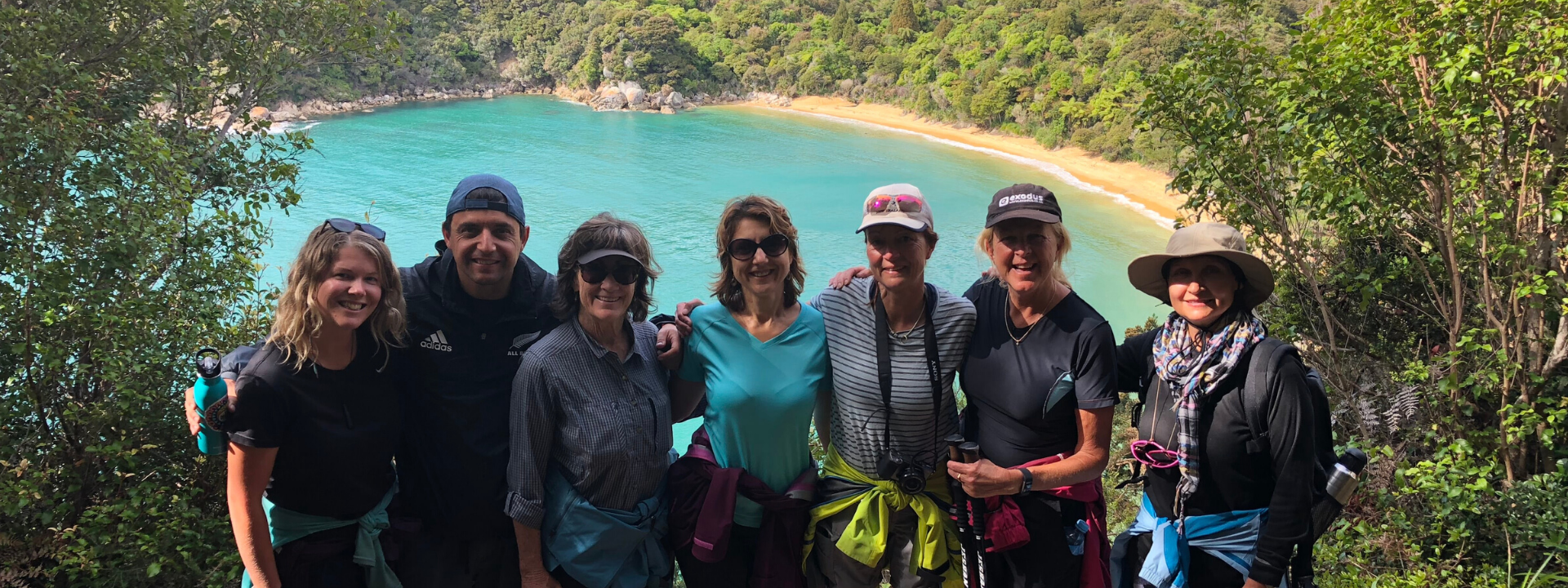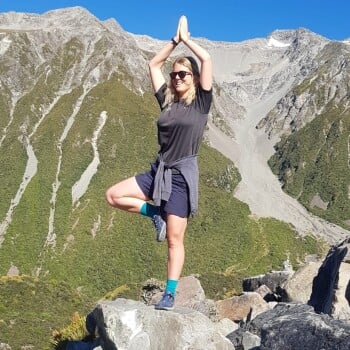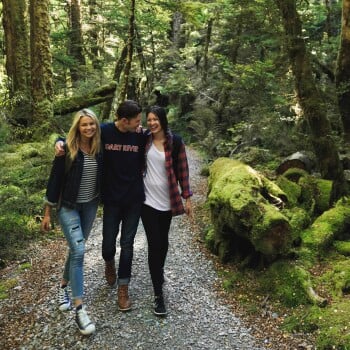- About Us
-
Trips
-
 Kiwi-Style Hiking
Kiwi-Style Hiking
-
 Great Walks
Great Walks
-
 Hiking Tours
Hiking Tours
-
Alpine Hikes
-
Custom Groups
- Huayhuash Trek
- Family Northern Explorer
- Family Southern Explorer
- Lake Waikaremoana Hike
- Women's Custom Tours
- Women's Southern Wilderness
- Coast, Canyons and Mountains
- Coastal Wanderer Custom Tour
- Don't Cross the Ladies
- Secret South Custom Tour
- Tekapo Hike
- West Coast Custom Tour
- World Heritage Custom Tour
-
- Blog
- Shortlist
- About Us
- Trips
- Blog
- Shortlist

Jul 15, 2020
Abel Tasman National Park

With a mild climate and pristine coastline of golden beaches, sculptured granite cliffs, turquoise blue waters and lush green New Zealand bush, Abel Tasman National Park is an ideal place to visit year-round. Native wildlife abounds; listen for the songs of the tui and bellbird in the forest, while shags, gannets and little blue penguins can be seen in many coastal spots as they dive for their dinner. Fur seals lounge about on the nearby offshore islands.
Interesting facts
- Maori have a long association with what is now Abel Tasman National Park, with evidence of habitation going back over 600 years. Most occupation was seasonal, with iwi (tribes) gathering seafood and growing kumara on sites suitable for horticulture. Pa (defensible sites) can be found on prominent headlands offering a panoramic outlook.
- Abel Tasman, a Dutch seafarer, didn’t actually set foot in the area now named after him when he visited in 1642 (in fact, he didn’t set foot on New Zealand soil at all). According to one version of events, a misunderstanding over the firing of a cannon lead to a violent encounter with the local Maori (under old maritime law, the firing of a cannon signaled coming in peace, but the local populace were not familiar with such a law), so Tasman and his remaining crew departed in haste.
- The next recorded European visits were by Captain James Cook in 1770, and again in 1773, although he also never landed either time due to unfavourable winds.
- In 1827, the French explorer Dumont D’Urville and the crew of his ship, the Astrolabe, anchored off the coast of what is now the national park. He explored and named many of the bays in the area; Adele Island he named after his wife.
- During the 1850’s and 60’s, much of the land within the park boundaries was subdivided and sold to settler families, for farming, boat building, the bark trade and quarrying. Native bush was burned and cleared. The land was later determined to be not suitable for farming, with poor soils and difficult terrain, and many farming attempts failed.
- The tourism potential of the area was recognised as early as 1886, with steamship excursions form Totaranui to Collingwood, and from Nelson to Bark Bay. The road to Kaiteriteri was built in the early 1930’s, as the bay was seen as an ideal weekend retreat. A camping ground was established not long after, and since that time, the area has become very popular with both domestic and international tourists enjoying the experiences the park has to offer.
- Abel Tasman National Park was officially opened in 1942. At 22,530 hectares in size, it is New Zealand’s smallest national park. Most of the tracks in the park were cut since that time as the early settler’s trails had fallen into disrepair; the track between Marahau and Torrent Bay was completed in 1955, with other tracks following thereafter.

Hiking opportunities
Abel Tasman National Park offers a range pf experiences, from day trips to multi-day adventures (including hiking and sea kayaking). The park is ideal for families, with plenty of opportunities for swimming, walks of any duration to suit abilities, and water taxis which allow you to combine walking with a scenic cruise along the coastline, so you can walk as far or as little as you like.
- The most well-known multi-day hike is the Abel Tasman Coastal Track; the more popular section - Marahau to Totaranui (which can be walked in either direction) - is 45km one way (allow 3 days). Water taxi transfers are available at either end.
Awaroa Inlet is a compulsory tidal crossing on this hike. The inlet can only be crossed within 1 hr 30 minute and 2 hrs after low tide, so ensure you check a tide timetable when planning your trip. - Combine a scenic coastal cruise with hiking, and you have the perfect day trip!
This will allow you to experience the more scenic sections of the track, with some wonderful side-tracks to hidden spots:
Bark Bay to Anchorage (high tide track 4hrs, 11.5km. Low tide track 3hrs, 8.4km)
This would be the most varied section of the coastal track as it includes the impressive 47m long Falls River Swingbridge (15 - 20m high depending on the tide), Torrent Bay inlet, the golden sands of Anchorage Beach and Cleopatra’s Pool, a refreshing swimming hole in clear green water. The track meanders through lush coastal forest and alongside turquoise coastal waters, all with stunning views.
Pitt Head Loop (3.4km return, 1.25 hrs)
The Pitt Head Loop from Anchorage Bay is great for families or those wanting a shorter walk. It’s not part of the main Coast Track, but still offers a taste of the best aspects of the park – fantastic scenery with views over blue waters and green headlands, kanuka forest, amazing birdlife and a glimpse into the life of pre-European Maori. Pitt Head was used as a vantage point and a defended pa site by Maori; the track takes you over a defensive ditch as you cross to the viewpoint, while remnants of kumara gardens can be found further along.

Hassle-free Hiking
Contact us for more hiking options along the Abel Tasman Coastal track!
The Ultimate Traverse and Ultimate South Island trips start on a high with a stunning boat cruise along the coast to Awaroa Bay where you begin your first multi day hike. Discover the contrast of Manuka and luxuriant mixed forest which opens up to golden sand beaches for the perfect swimming spot to cool down. Your guides will take you to a hidden fresh water rock pool nestled amongst the native forest, If you are feeling nimble you can join the guide for a boulder hop further up the valley here exploring idyllic pools and waterfalls.
The Southern Slice is a great way to experience the Abel Tasman National Park by day. Take a boat cruise along to Bark Bay and begin a 12km walk along the coastal track stopping off at Cleopatra's pool along the way where you might be tempted to take a dip and slide down the naturally formed fresh water hydro-slide! We continue hiking along to Anchorage where the water taxi is waiting to take you back to Kaiteriteri Beach. You end this magical day in sunny Nelson where you have the chance to dine out in one of the many great restaurants before calling it a night at the relaxing Rutherford Hotel.
Abel Tasman 3 Day or 5 Day hike - If you are limited on time but want to see what this National Park has to offer, the 3 day or 5 day Abel Tasman Hike is a great opportunity to explore this coastal walkway. You are treated to stunning beachfront lodges each night and a delicious cooked breakfast, packed lunch and 3 course meal each day! The water taxi is there to support you along the track and will even deliver your luggage to the lodge so all you need to carry is your day pack. For an added adventure, book the kayaking option to paddle your way down the coastline through crystal clear, sparkling ocean.
Hot tips
- The Park Café at Marahau is your last chance for a real coffee before entering the park, or your first opportunity if exiting this way. Right on the doorstep of the park, it is open for breakfast, lunch and dinner.
- The Fat Tui Burger bus is also located in Marahau, arguably one of the best burgers you will taste in the South Island!
- Take sunblock and a swimsuit. Wear comfortable hiking shoes or boots and take along water sandals or similar for estuary crossings.
- If you are self-driving to the park and opt to combine a coastal cruise with a day hike, it can be a good idea to ensure your journey will begin and end at the same location – either Marahau or Kaiteriteri.
The walk from Marahau to Kaiteriteri is around 7.5km along a road not really suitable for pedestrians; shuttle buses do operate but times are limited. So, if you leave your car at Kaiteriteri and water taxi into the park intending to walk back to Marahau, just be aware of this.
Alternative suggestions to avoid intermittent shuttles or a 7km road walk when legs are already weary:
- park your car at Marahau and water taxi or walk from there. You can either water taxi back to Marahau with the same operator or walk out of the park straight back to your car.
- water taxi into the park with a Kaiteriteri-based operator, enjoy a lovely day hike along a section of the track before taking a coastal cruise back to Kaiteriteri, where your car awaits.







